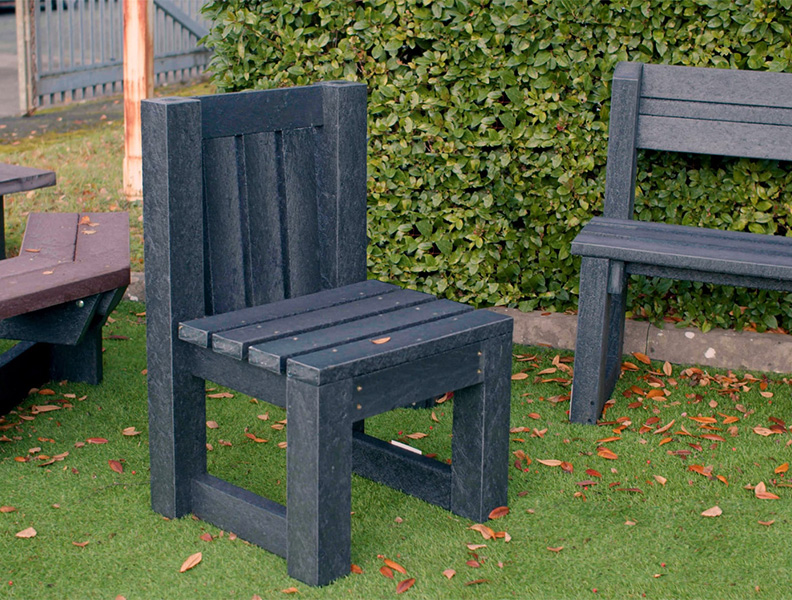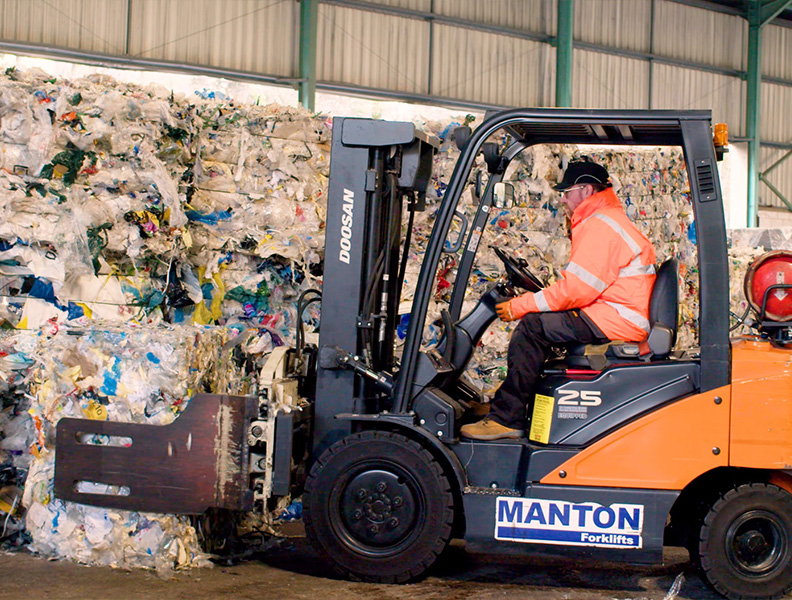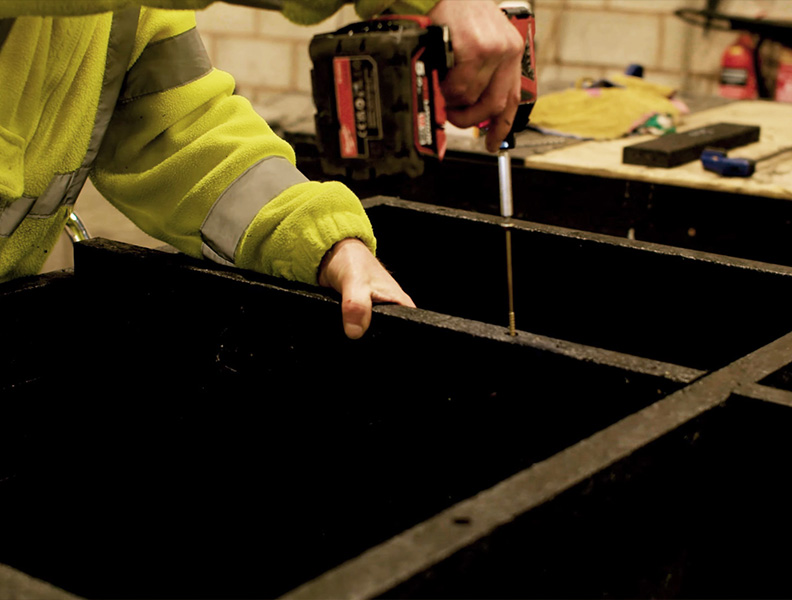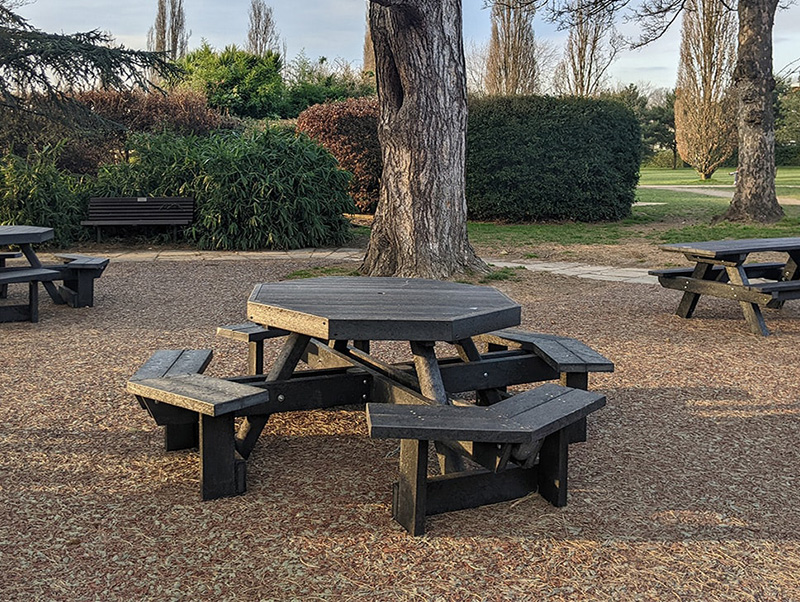Marking an exciting new direction for Cladco, we’re proud to introduce our range of recycled plastic products, including durable, low-maintenance outdoor furniture. Built on our long-standing commitment to sustainability and supporting a more environmentally friendly future, these products reflect the same principles outlined in our Environmental Policy, reinforcing our goal to create high-quality building solutions that contribute to a more sustainable future.


In this article, we’ll take you behind the scenes at Plastecowood’s manufacturing plant near Rhyl in North Wales, to explore how everyday plastic waste - material that might otherwise end up in landfill; is instead transformed into strong, practical products ranging from garden planters to picnic tables.
Collecting the Plastic
The process begins with sourcing the raw material, which consists of soft plastics such as food wrappers, crisp packets, plastic bottles, and containers. Plastecowood works closely with waste management companies and major national retailers, including Tesco, Waitrose, and John Lewis, who collect and separate suitable plastics through dedicated in-store recycling schemes.


These plastics can’t typically be recycled at home through weekly recycling collections, so this partnership helps divert large volumes of waste from landfill and gives the waste material a new purpose.
Manufacturing
Once the plastic arrives at Plastecowood’s North Wales facility, it is then reprocessed into durable Smartawood, a sustainable alternative to traditional timber.


First, the plastic is shredded and cleaned, breaking it down into smaller pieces for easier processing. “The entire process is unique and top-secret, so we can’t reveal every detail, but it includes heating the material and extruding it into moulds.


Once set, the material, now resembling long planks, can be used to construct a wide range of useful, everyday items, from stylish benches, table and chair sets, and picnic tables, to practical items, such as compost units.


All products are handmade by Plastecowood’s team of skilled craftspeople and then distributed around the UK. Any trimmings or off-cuts are recycled again to ensure nothing is wasted.


As well as everyday domestic items such as furniture, this material can also be used to create recycled plastic decking, shelving units, fencing, playground equipment, and even pallets for industrial and commercial use.


Sustainability in Action
Every year, an estimated 100 billion pieces of plastic are discarded in the UK, much of which falls outside what can be processed through standard household recycling schemes. By transforming this waste into carbon-negative plastic lumber, the process used by Plastecowood gives discarded materials a valuable new life.
Each tonne of this recycled material repurposes around 25,000 plastic containers, preventing approximately 700 kilograms of carbon emissions from entering the atmosphere through landfill or incineration. Each tonne also prevents the felling of around 2.5 trees, helping preserve natural habitats and maintain vital carbon-absorbing forests.
Compared to traditional materials such as wood or steel, this recycled plastic offers a more environmentally friendly, circular alternative, one that’s built to last for over a hundred years, requires minimal maintenance, and continues to contribute to sustainability long after production.


Turning Plastic Waste into a Greener Future
The final stage of the process brings everything together, turning recycled plastic lumber into functional, long-lasting products that you can use anywhere. The result is a wide range of products designed not only for homeowners, but also for businesses, schools, and local councils who value durability, low maintenance, and long service life.
Below is a gallery showcasing how recycled plastic is transformed into strong, practical, and sustainable products, each example highlighting the versatility of this innovative material.


Last Updated: November 10, 2025
Please note all information is correct at the time of writing. However, we encourage you to do your own research to ensure it remains accurate and relevant to your needs.




